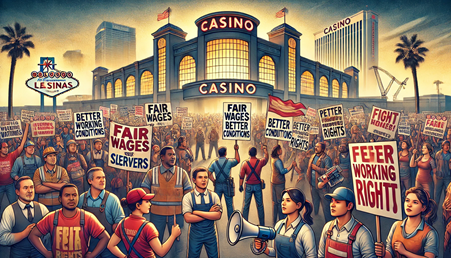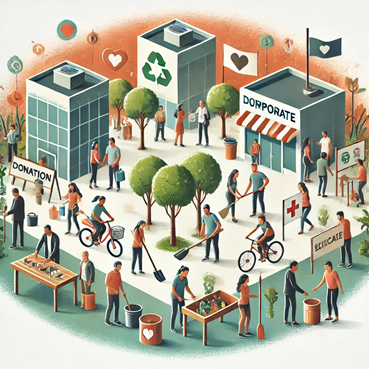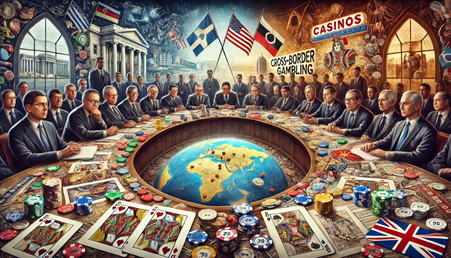Can circular economy models help reduce global waste?

Can circular economy models help reduce global waste?
by Nathaniel 05:21pm Jan 08, 2025
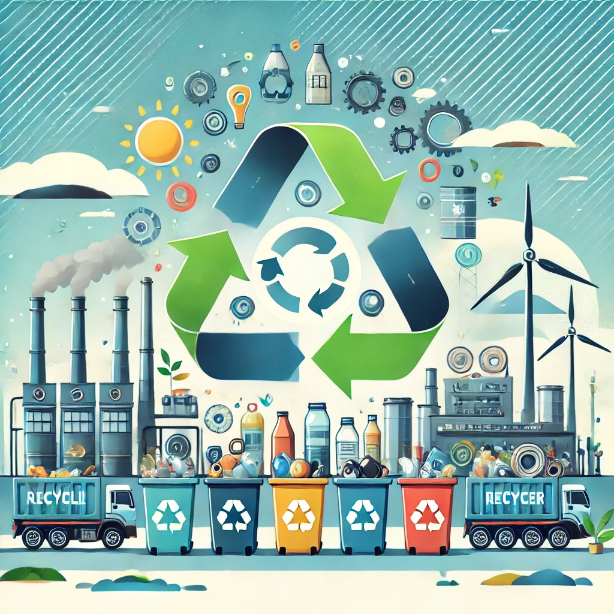
Can circular economy models help reduce global waste?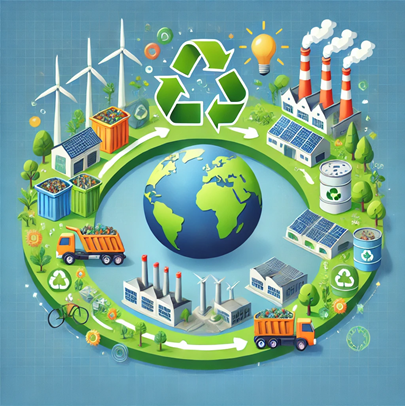
Yes, circular economy models can significantly help reduce global waste, and they offer a comprehensive framework for rethinking how products are designed, used, and disposed of. The transition from a traditional "linear economy" (take, make, dispose) to a "circular economy" (reduce, reuse, recycle, remanufacture) can help minimize waste generation and enhance resource efficiency. Below are the key components of how circular economy models can contribute to reducing global waste in more detail:
1. Design for Longevity and Durability
Extended Product Life:In a circular economy, products are designed to last longer, be repairable, and easy to upgrade. For example, electronics can be designed with modular components that can be swapped out when they break, instead of discarding the entire device.
Preventing Obsolescence: By focusing on durability, circular economy models aim to reduce the need for frequent replacement of goods, decreasing the waste generated from discarded products. This approach counters the phenomenon of planned obsolescence, where products are deliberately designed to break or become outdated quickly.
Example: Companies like Patagonia and IKEA have focused on designing products for longevity, offering repair services and parts replacements, which extends the life of their products and reduces overall waste.
2. Closing the Loop: Reuse and Repurposing
Second-hand and Refurbished Products: Circular economies encourage the reuse of products, which reduces the need to create new items from scratch. For instance, a mobile phone can be refurbished or resold, extending its useful life and keeping it out of landfills.
Upcycling:Materials from old products can be repurposed to create new ones. This reduces the need to produce raw materials and diverts waste from landfills. For instance, plastic bottles can be upcycled into fashion accessories or textiles.
Example: Fashion brands like The North Face and Levi's have initiated programs that allow consumers to return old products, which are then repurposed or refurbished for resale or further use.
3. Recycling and Resource Recovery
High-Quality Recycling: A key aspect of the circular economy is high-quality recycling, where materials from old products are recovered and returned to the production cycle. For example, instead of throwing away a plastic bottle, it is recycled into new products, like clothes, packaging, or construction materials. The goal is to recycle materials in a way that preserves their value and quality.
Closed-Loop Systems:In a true circular economy, the production process creates closed loops where products are recycled back into the system rather than being discarded. This can be especially important in sectors like electronics, automotive, and textiles, where materials like metals, plastics, and fabrics can be reused multiple times, reducing the need for raw materials.
Example: The Ellen MacArthur Foundation advocates for a system where companies like Coca-Cola, which use plastic packaging, implement return-and-recycle systems to create a circular flow of packaging material.
4. Waste as a Resource: Industrial Symbiosis
Waste-to-Resource Systems: Circular economy models see waste as a resource that can be utilized rather than discarded. Industrial symbiosis involves different industries collaborating to use each other’s waste products as raw materials. For instance, the waste heat from one factory might be used to power another, or leftover materials from one process can be used in another process.
Energy Recovery:Instead of landfilling waste, some circular models focus on converting waste into energy through technologies like waste-to-energy plants, reducing the overall amount of waste that ends up in landfills.
Example: The Kalundborg Symbiosis in Denmark is a well-known example of industrial symbiosis where waste from one company is used as an input by another, creating a closed-loop system that reduces waste and improves resource efficiency.
5. Sustainable Business Models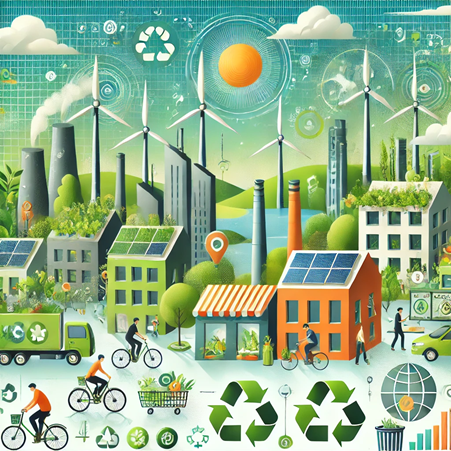
Product-as-a-Service (PaaS): In the circular economy, business models shift from ownership to service. Rather than selling products, companies lease or provide them as a service. For example, rather than buying a washing machine, a customer could lease it and return it when it's no longer needed, where the company repairs, reuses, or recycles the machine.
Leasing and Sharing Models: Product leasing or sharing, particularly in sectors like electronics, clothing, and transportation, can significantly reduce the need for constant production and disposal. This reduces the amount of waste because products are maintained, reused, and shared among many users.
Example: Companies like Rent the Runway, which rents out clothing, or car-sharing services like Zipcar, are examples of how leasing and sharing models can reduce waste by extending the life cycle of products.
6. Reduction of Overconsumption
Encouraging Sustainable Consumption: A circular economy encourages businesses and consumers to adopt practices that reduce the consumption of new goods.This includes prioritizing quality over quantity, and choosing products that have a smaller environmental footprint. As part of the circular model, there is an emphasis on consuming less, buying sustainably, and considering the environmental impact of purchases.
Mindful Consumption:Circular economy models incentivize behaviors like repairing items, reducing packaging waste, and choosing products that are recyclable or biodegradable, thereby reducing overall waste generation.
Example: Companies like Unilever and Procter & Gamble have made efforts to reduce packaging waste by using recyclable materials, simplifying designs, and focusing on reducing single-use plastics.
7. Policy and Regulatory Support
Extended Producer Responsibility (EPR): Governments can play a crucial role in supporting circular economy initiatives through policies such as EPR, where producers are held responsible for the entire lifecycle of their products. This creates incentives for manufacturers to design products that are easier to reuse, repair, or recycle, thereby reducing waste.
Zero Waste Policies:Local governments and cities adopting zero-waste policies can help implement circular economy practices on a large scale. These policies often involve providing infrastructure for recycling, waste separation,and composting, making it easier for communities to participate in circular systems.
Example: In many European countries, EPR schemes are already in place, requiring manufacturers to ensure that products are recyclable or to take responsibility for the collection and recycling of the product at the end of its life cycle.
8. Reduction of Landfill Waste and Pollution
Diverting Waste from Landfills: Circular economy systems aim to divert waste from landfills, where it often decomposes and produces harmful gases like methane. Instead, waste is reused, recycled, or transformed into new products or energy, greatly reducing the environmental burden.
Reducing Plastic Pollution: One of the most pressing concerns regarding waste is plastic pollution. Circular economies prioritize the reduction of single-use plastics, encourage recycling of plastics, and promote the use of biodegradable alternatives. Additionally, circular models may support the recovery of plastic waste from oceans and waterways for recycling.
Example: Initiatives like The Ocean Cleanup project focus on collecting plastic waste from the ocean, which can then be recycled into new products in a circular system.
Challenges to Overcome
While circular economy models have significant potential to reduce global waste, several challenges exist:
Infrastructure:Proper infrastructure for recycling, waste collection, and remanufacturing is often lacking, especially in low-income regions.
Consumer Behavior:Changing consumer habits toward more sustainable practices requires education and incentives.
Economic Viability:Some circular economy practices may require initial investments in new technologies or business models, which may be a barrier for some companies.
Conclusion
In sum, circular economy models can indeed play a vital role in reducing global waste by promoting the reuse, recycling, and efficient use of resources. By focusing on sustainable product design, waste reduction, resource recovery, and the adoption of new business models, a circular economy not only reduces waste but also conserves natural resources, cuts down on pollution, and supports long-term environmental sustainability. However, achieving a global transition to a circular economy requires a combination of innovation, business adoption, consumer engagement, and supportive public policies.


